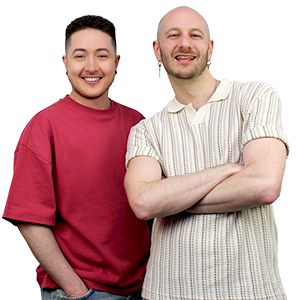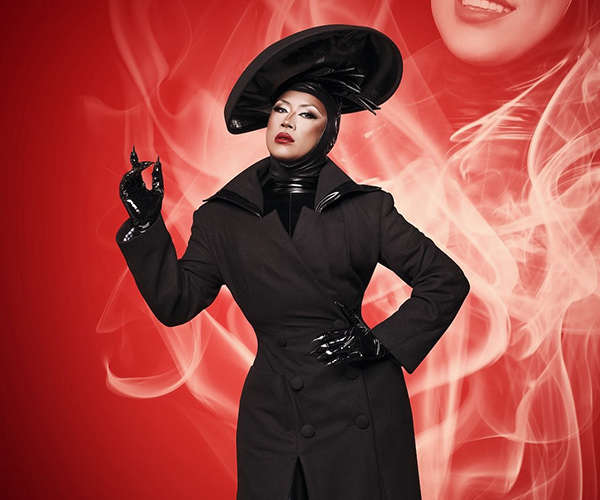The narrow medieval streets and canals of Strasbourg in France, on the border with Germany, have little in common with Southport in the UK. Yet the stabbing of three little girls there resonated for one man here. And his subsequent posts on social media resonated around the world - and back to the UK
In a business park on the edge of town, Silvano Trotta runs a successful telecoms business. But from his large private office, filled with miniature cars and pictures of his family, he spends much of his time posting online.
He came to prominence during COVID, publishing anti-vax posts, and getting banned from YouTube, Facebook, and Twitter, before subsequently being reinstated on Elon Musk's rebranded X, where he posts mainly about immigration.
Trotta is bespectacled, genial, and unafraid of controversial views.
When the Southport stabbings happened on 29 July, he posted false information to the messaging app Telegram that they were carried out by an immigrant who had arrived on a small boat and gave the false name Ali Al Shakati. Our investigation shows that his post was one of the most influential of any of those making similar misleading claims on Telegram.
Trotta shrugs it off when I point out that this was entirely false.
"Who doesn’t make mistakes? But whatever happened, he is still a migrant, even if he was born in Wales."
I've come to Strasbourg because what happened here is crucial to understanding what happened in the UK riots.
We've worked with Prose, an open-source intelligence start-up, to understand the online conversation around Southport on Telegram, the app where the stabbings were discussed, the narrative was developed, and the riots were organised.
Previous reporting has highlighted specific pieces of misinformation that fuelled the riots: the fake name from news publisher Channel 3 Now, which they subsequently retracted and apologised for, and the individual bad actors in Telegram groups abroad.
But now Sky News can reveal the full story.
Prose monitors more than 10,000 extremist and conspiracist groups on Telegram, every day collecting and archiving everything they post. Together, we looked at how active those groups were around Southport, starting on the day of the stabbings and for two weeks afterwards, looking at 11,051 total messages from 1,496 different chats and channels.
And what we found belies the idea that this was just a British reaction to a British issue. Out of the top 20 most influential accounts, in terms of reach, views and interaction, only six were from the UK. The rest were based abroad.
"While all the action is happening on the ground and people in Britain are dealing with the consequences of this misinformation," says Al Baker, managing director of Prose, "the people stoking the violence, the people flooding Telegram and other platforms of misinformation are largely based outside the UK."
What it shows is the nature of the new far-right - not a tightly organised hierarchy based in a specific location, but an international network of influencers and followers, working together almost like a swarm to stir up trouble.
And it is extremely worrying for the security services. The head of MI5 Ken McCallum last week told Sky News that, compared to traditional radicalisation, the extreme right instead relies on a "pick and mix ideology" where people pull on hatred and misinformation from mostly online sources.
Rather than specific organisations, it is, he said, a "crowd-sourced model".
Bristol, Saturday, 3 August and the streets were seething. A confrontation between protesters and counter-protestors turned into a running battle, first at Castle Park, and then down to the bridge below. Police horses repeatedly charged the rioters. They threw bottles back: I got one in the head while I was reporting.
The skirmishes continued outside the centre, up towards a hill and a hotel which houses asylum seekers. Eventually, it died away.
Those who took part though were left with the consequences: several were sentenced to years in prison. But they were not far-right extremists, as is traditionally understood.
"The unrest has been fuelled by disinformation that has been circulating, particularly on social media," the judge said in his remarks.
One of those convicted for violent disorder was Dominic Capaldi, 34. He handed himself into the police.
Capaldi's neighbour David Lomax told us that he "is just a caring bloke and a very quiet chap".
"He got dragged into it somehow, and he didn't realise what he was getting dragged into.
"And a lot of these people that do all these things, they don't come from Bristol."
Inciting those on the ground was a specific goal of the online far-right, according to Mr Baker, at Prose.
"These are communities which are expressly specifically and in a very dedicated and organised fashion devoted to exploiting racial divisions internationally," Baker says.
"Any incident which could plausibly involve an immigrant, a Muslim, someone who isn't white, regardless of whether in fact they did it or not, these communities are going to kick into action and try and stoke up division and racial hatred."
This network map shows how those groups interact.
The points in the red cluster are UK-based, English-speaking accounts on Telegram, during the two weeks after the Southport murders. And they're dwarfed by other groups. The purple is non-UK-based English-speaking accounts. Orange shows German, for example. Dark blue is pro-Russian accounts. Below them, in yellow, are Russian-speaking accounts.
And although the online far-right may be more shapeless, less structured, than the traditional version, it still contains the hardcore element.
"There are very extreme groups who routinely funnel information into these broader networks who were clearly, specifically, indirectly trying to incite a race war on the back of the Southport murders," Mr Baker from Prose says.
"The core of these communities are very serious people, including members of proscribed terrorist organisations, extreme neo-Nazi groups. The word 'Nazis' and the word 'fascist' is overused.
"But when I describe the groups that were influencing the tactics and the targets of the rioters, these are fully paid-up neo-Nazis who want to see the extermination of non-white people."
Along with Telegram, X was also used to fuel the riots.
Here, research shared exclusively with Sky News by Ned Mendez, director of consultancy Clash Digital, found a similar emphasis on non-UK accounts. The most widely shared and retweeted content on Twitter/X during the initial three days of the unrest was primarily authored by non-domestic accounts from the USA and Europe, which repurposed local incidents to push inflammatory and divisive content into the UK discourse.
Jacqui McDonald knows exactly how that works. She's a freelance journalist who was covering a vigil in Southport the day after the attack and posted a video of the crowd that gathered to mourn together.
Amy Mek, an online influencer based in the US and known for promoting anti-immigration views, ripped Ms McDonald's video and reposted it with her own comments, in which she said the Islamic community usually "swarm the streets" and "seize control of public spaces".
This was the single most widely shared piece of content on X during the unrest. The original video earned 11,000 views; the repurposed content got 5.5million views in a few days.
I meet Jacqui in the square where she filmed the vigil. Tributes to the girls still stand - dolls tied to lampposts, handwritten cards in the flowerbeds. I show her Amy Mek’s post on X.
"It wasn't true at all to what was happening in her language, the inflammatory use of what she was saying and the way she framed that video wasn't what we were seeing in front of us," she says.
"We were seeing a respectful, peaceful, quiet vigil for those children who had died that day."
That is one of the tragedies of the riots, that they eclipsed the grief the town felt - and still feels.
Read more from Sky's Data and Forensics team
How the far right hijacked Southport protests
Far-right outnumbers anti-racist movement on engagement
We asked several accounts for comment, including Amy Mek. She told us she rejected the labels far-right, hard-right and conspiracist, saying these were based on "biased generalisations" and added: "I unequivocally reject any form of violence that took place during the riots."
She said Jacqui McDonald's video had been sent to her as a tip and had assumed that the person who sent it had taken the footage. She said she was upset to hear it had originated from a freelance journalist and would ensure they received proper credit, along with a public statement.
"Just as I had no control over how the tipster's video came to me without proper attribution, I also had no control over how others used or interpreted my content," Mek said.
We also approached X but received no reply, while Telegram spokesperson Remi Vaughan told us: "Telegram is not a place to spread violent content. Moderators removed UK groups and channels calling for violence when they were discovered in August...
"To dissuade criminal misuse of Telegram, IP Addresses and phone numbers of criminals who violate our rules can be disclosed to the authorities in response to valid legal requests. We are ready to cooperate with the UK government through the appropriate channels."
The concern is that it may all happen again, that the online far-right remains active - as the head of MI5 warned - and that this wasn’t a one-off but a playbook, one that will be more effective next time.
"Large swathes of the online far-right see Southport as a missed opportunity," Mr Baker says. "There is a huge amount of recrimination, people blaming one another for how quickly the riots fizzled out."
"And I think we should be very concerned that they're not going to make the same mistake twice."
Southport is a memorial - and it is a warning.
The Data and Forensics team is a multi-skilled unit dedicated to providing transparent journalism from Sky News. We gather, analyse and visualise data to tell data-driven stories. We combine traditional reporting skills with advanced analysis of satellite images, social media and other open source information. Through multimedia storytelling we aim to better explain the world while also showing how our journalism is done.

(c) Sky News 2024: Riots and the far right: The global network behind the violence

 Millions of Sudanese displaced by war face a new fight - against deadly diseases
Millions of Sudanese displaced by war face a new fight - against deadly diseases
 World Conker Championships investigates cheating concerns after winner found with steel nut
World Conker Championships investigates cheating concerns after winner found with steel nut
 'Heartbroken' Phillip Schofield pays tribute to his 'magnificent' mother Pat, as he announces her death
'Heartbroken' Phillip Schofield pays tribute to his 'magnificent' mother Pat, as he announces her death







